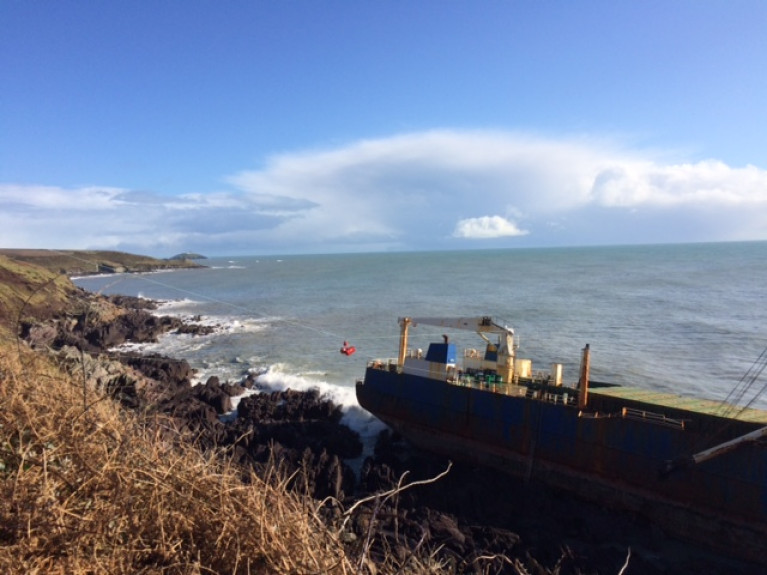Displaying items by tag: Cargoship Alta
Oil Drums From Grounded Ghost Ship to Be Removed by Cork County Council
Preparing to remove materials from a grounded ghost ship by helicopter on Tuesday is in the hands of Cork County Council as they could pose a pollution risk.
The council according to Green News.ie, is preparing to airlift barrels of machine oil from the abandoned cargo ship (Alta) stranded on rocks near Ballycotton in east Cork as part of its pollution mitigation efforts.
It has said that the coastal operation to reduce the risk of an oil spill from the ghost ship was ongoing during the weekend and that a helicopter is going to be used to facilitate the process.
The 77m long cargoship, MV Alta was abandoned since September 2018 and was drifting across the Atlantic until it was grounded in Ballycotton during Storm Denis. The US Coast Guard had rescued the ship’s 10 crew members from the Atlantic Ocean in 2018.
The Council had previously said that very little diesel was left in the vessel’s fuel tanks and that its environmental scientists are satisfied that there is no visible pollution within the Ballycotton Bay Special Area of Conservation (SAC) or nearby Natural Heritage Areas.
Following further investigation, the local authority discovered barrels of machine oil and diesel stowed in various parts of the MV Alta. A marine contractor has now boarded the ship to bring barrels onto the deck to facilitate their safe removal, according to the Council.
Click HERE for more on this story.























